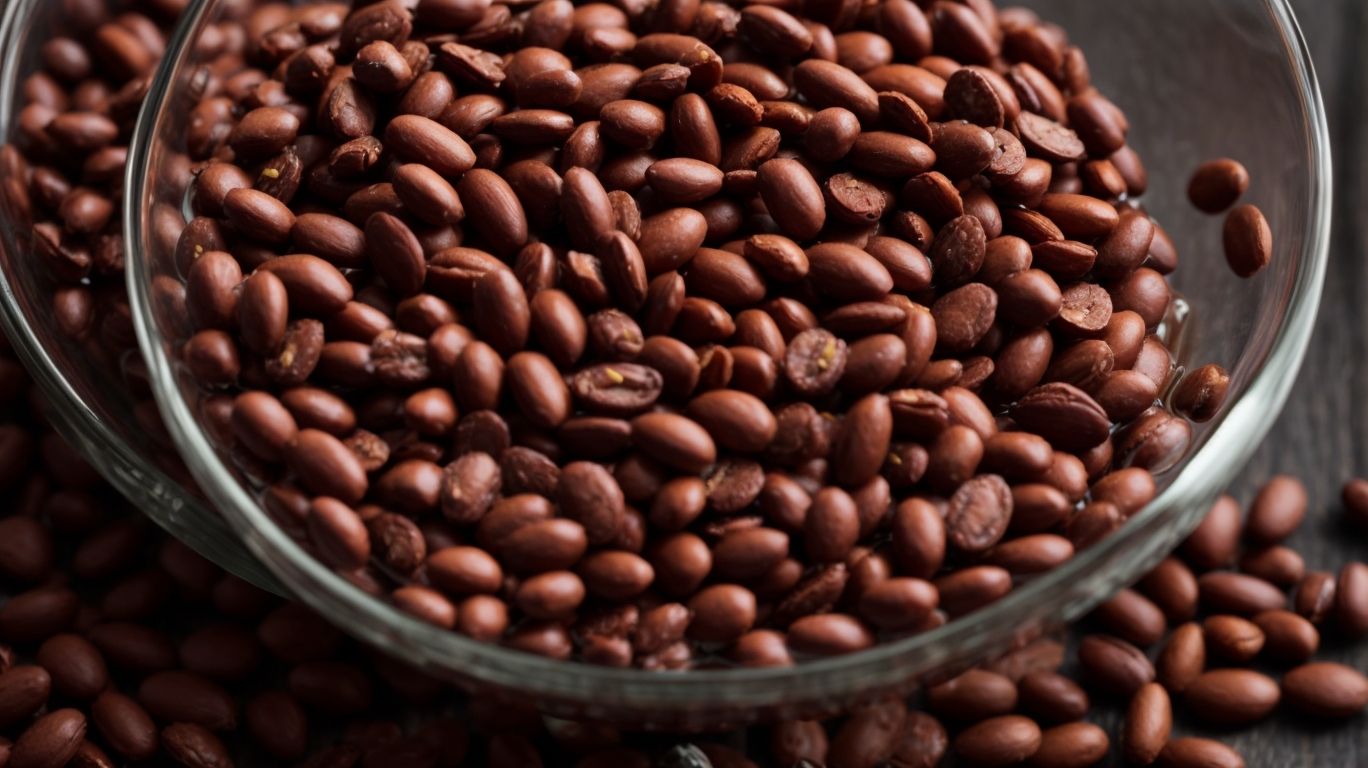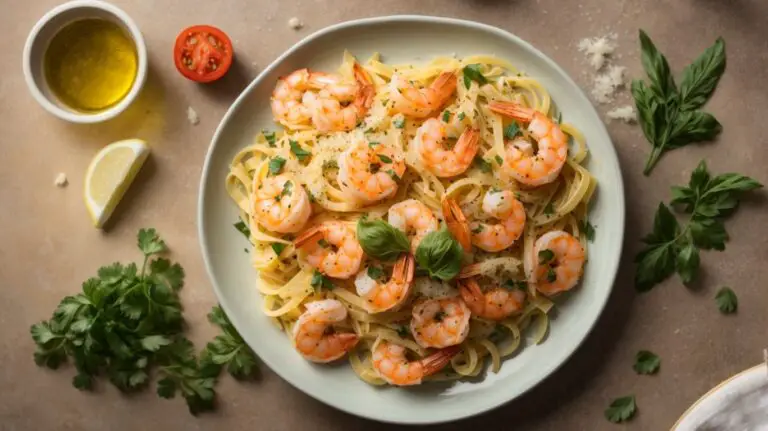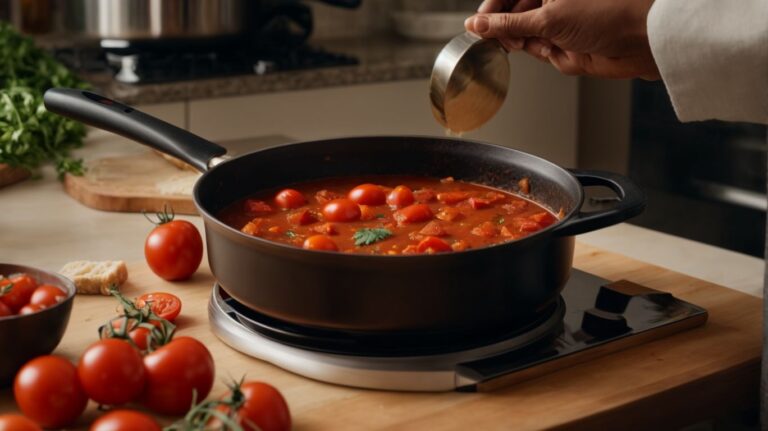How to Cook Rajma Without Soaking?
Rajma, also known as kidney beans, is a popular ingredient in many Indian dishes. But the debate over whether to soak them before cooking is a common dilemma.
We will explore the benefits of soaking Rajma, how long they should be soaked, and whether it is necessary at all. A step-by-step guide on how to cook Rajma without soaking will be provided, along with some expert tips for achieving the perfect texture and flavor.
Let’s dive in and learn how to master this delicious dish!
Key Takeaways:
What is Soaking and Why is it Done?
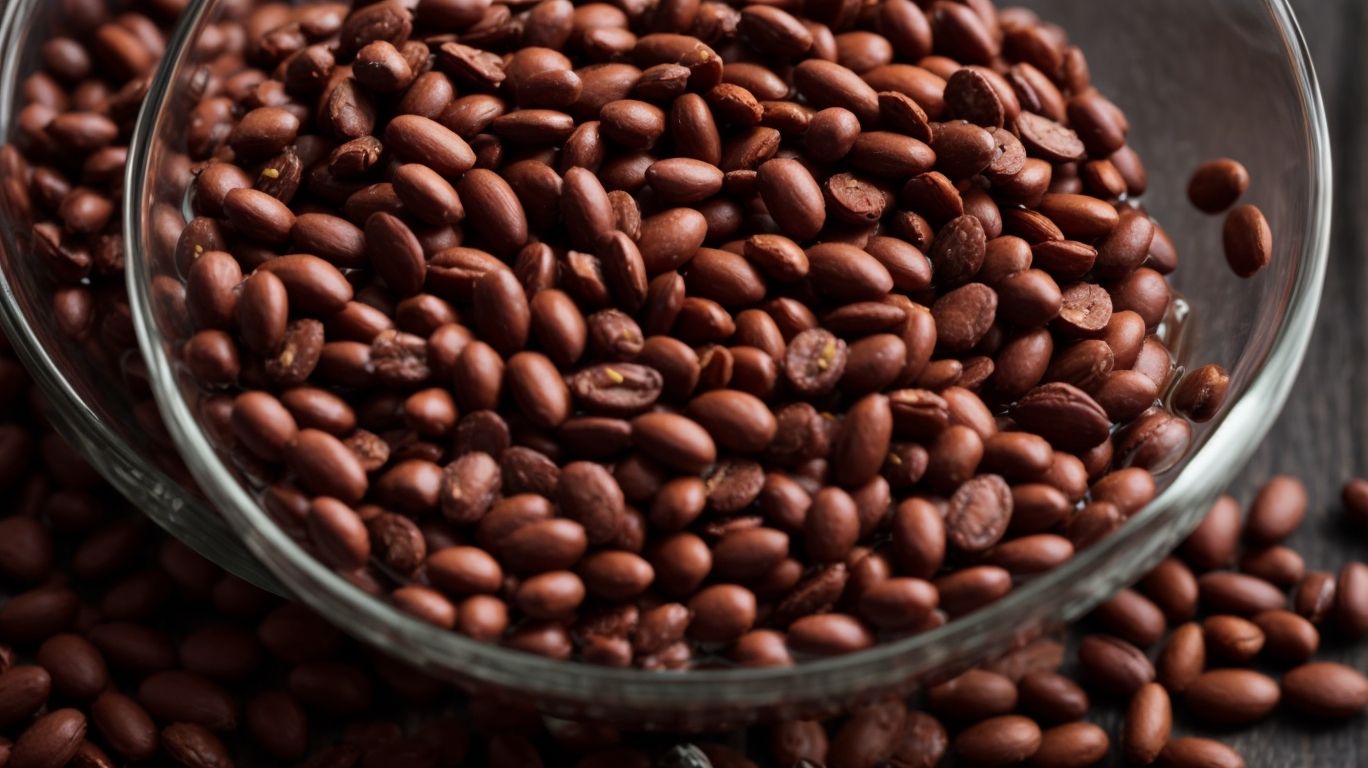
Credits: Poormet.Com – Philip Martin
Soaking is a process where dry Rajma, also known as beans or legumes, are immersed in water for an extended period before cooking.
Soaking plays a crucial role in preparing Rajma by softening the beans, which not only reduces the cooking time but also aids in enhancing digestibility. When Rajma is soaked adequately, it allows the beans to absorb water, making them plumper and easier to cook. This process helps to break down complex sugars that can cause digestive discomfort, making the beans more palatable and easier to digest. Soaking can help remove anti-nutrients present in Rajma, improving its nutritional profile and making its nutrients more readily available for absorption.
Is it Necessary to Soak Rajma Before Cooking?
The question of whether soaking Rajma before cooking is essential often arises, especially when considering time constraints and alternative cooking methods like pressure cooking.
Soaking Rajma, traditionally performed to reduce cooking time and aid in digestion, is debated among cooking enthusiasts for its impact on the final dish. When Rajma is soaked overnight, it is believed to yield a creamier texture, enhanced flavor absorption, and more even cooking. On the other hand, cooking unsoaked Rajma can result in a firmer texture and a slightly earthier taste, though it may require longer cooking time and can sometimes lead to unevenly cooked beans.
What are the Benefits of Soaking Rajma?
Soaking Rajma offers several advantages such as faster cooking times, improved digestibility, and reduced flatulence due to the breakdown of complex sugars in the beans.
When Rajma is soaked, it helps to soften the beans, making them quicker to cook and easier to digest. This process also enhances the nutritional value by activating enzymes that increase the availability of essential nutrients. Soaking Rajma can lead to a smoother texture in dishes, as the beans plump up while cooking. By reducing the oligosaccharides present in the beans, soaking helps in minimizing digestive discomfort and gas production, making Rajma a more agreeable option for those with sensitive stomachs.
How Long Should Rajma be Soaked?
The ideal soaking time for Rajma depends on the type of beans used, but generally ranges from 6 to 8 hours in ample water to ensure proper hydration and softening.
It’s important to pay attention to the water temperature during soaking as well. In colder climates or during winter months, consider using slightly warmer water to aid in the soaking process. Conversely, in hot weather, using cool water can prevent the beans from fermenting. Maintaining a consistent room temperature also plays a vital role. If your kitchen tends to be cool, you may need to extend the soaking time slightly.
When soaking different varieties of beans, such as kidney beans or black beans, be mindful of their individual absorption rates to achieve the desired texture.
How to Cook Rajma Without Soaking?
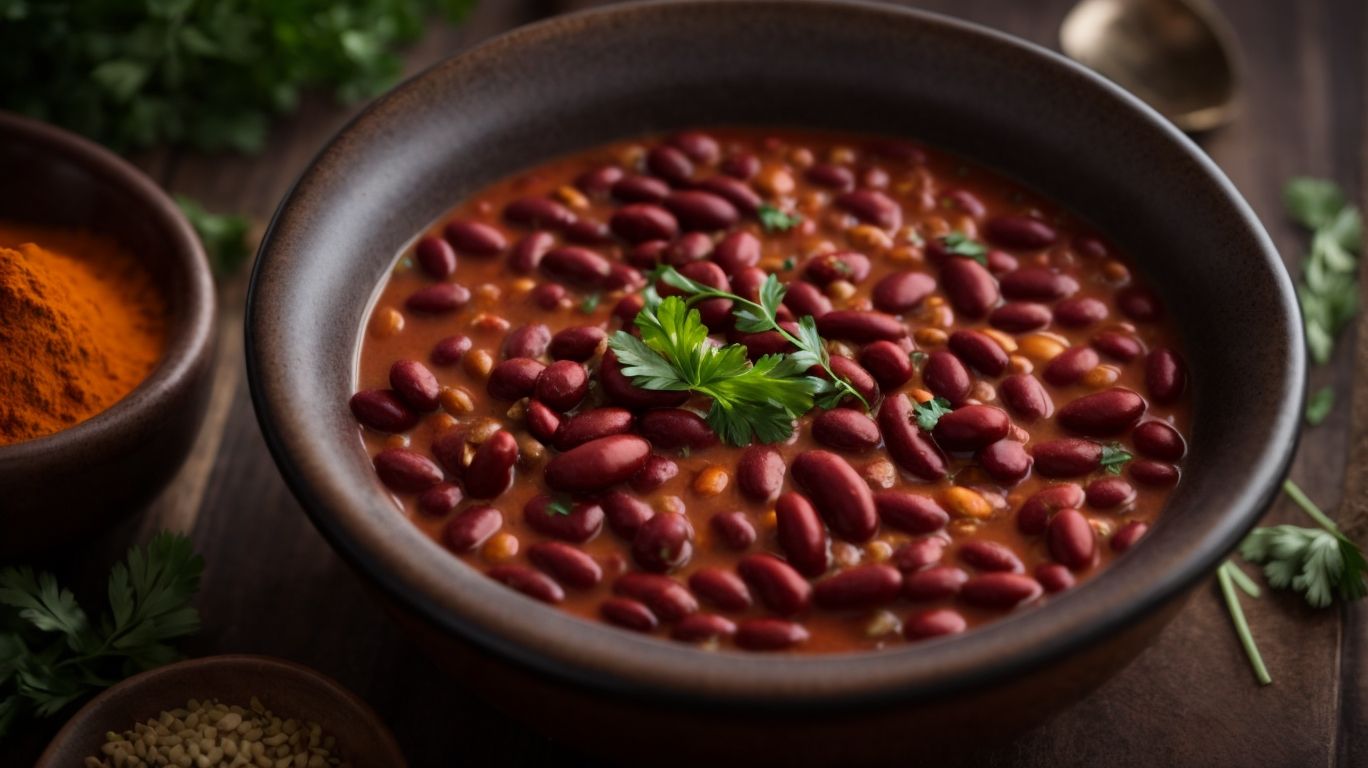
Credits: Poormet.Com – Joshua Johnson
Cooking Rajma without soaking is a viable option for those seeking a quicker preparation method, especially when utilizing a pressure cooker for efficient cooking.
Pressure cookers offer a fantastic way to cut down on cooking time without compromising on flavor.
To cook unsoaked Rajma perfectly in a pressure cooker, adjust the cooking time by increasing it to about 25-30 minutes. This ensures that the beans are fully cooked and have reached the desired tenderness.
Consider modifying your recipe by adding more flavorful spices or ingredients to enhance the taste profile of your unsoaked Rajma dish. By incorporating these alterations, you can create a delicious and satisfying meal in no time.
What are the Ingredients Needed?
To cook Rajma without soaking, the essential ingredients include Rajma beans, tomatoes, onions, a blend of aromatic spices like garam masala and cumin, and a base of chickpea flour for thickening the curry.
“
Each ingredient plays a crucial role in shaping the rich and flavorful profile of the dish.
- Rajma beans form the heart of the recipe, offering a creamy texture and earthy taste.
- Tomatoes add a tangy sweetness, while enhancing the overall color and juiciness of the curry.
- Onions provide depth and aroma, creating a savory base for the flavors to meld.
- The blend of garam masala and cumin infuses warm and aromatic notes, elevating the taste profile with a hint of spiciness.
- Chickpea flour, known for its thickening properties, helps achieve the desired consistency, making the curry rich and luscious.
Combining these ingredients in harmonious proportions results in a delectable Rajma dish that is sure to impress even the most discerning palates.”
Step-by-Step Instructions:
Follow these detailed steps to cook Rajma without soaking, from rinsing the beans to garnishing the final dish with fresh herbs and spices for added flavor and visual appeal.
Before starting the cooking process, make sure to rinse the Rajma beans under cold water to remove any impurities or dirt. Then, in a pressure cooker, heat oil and add cumin seeds, bay leaves, and chopped onions for a flavorful base.
Next, add in minced garlic, ginger, and green chilies for a layer of aromatic goodness. Saute until the onions turn translucent, and then mix in tomatoes, turmeric, coriander powder, red chili powder, and garam masala for a rich and spicy gravy.
Rinse the Rajma
Before cooking unsoaked Rajma, ensure to thoroughly rinse the beans under running water to remove any dirt, debris, or excess starch that may affect the dish’s final texture and appearance.
Properly rinsing Rajma is a crucial step in the cooking process, as it not only cleanses the beans but also helps in eliminating any impurities that may be present on the surface. By rinsing the Rajma, you are ensuring that the beans are free from any contaminants that could alter the flavor or texture of your dish. Washing the beans can also contribute to better digestion and overall food safety.
By rinsing Rajma, you are enhancing the quality and taste of the final prepared dish. Cleaner beans lead to a more satisfying culinary experience, as they allow the flavors of the other ingredients to shine through without any unwanted residues interfering. This simple yet essential step sets the foundation for a successful Rajma recipe, ensuring a delicious and wholesome meal for you and your loved ones.
Pressure Cook the Rajma
Utilize a pressure cooker to expedite the cooking process of unsoaked Rajma, ensuring a tender texture and infused flavors by using the appropriate pressure release techniques for optimal results.
When preparing unsoaked Rajma in a pressure cooker, one of the key advantages is the significant reduction in cooking time compared to traditional stovetop methods. With the high-pressure environment of the cooker, Rajma beans cook much faster, typically requiring around 20-25 minutes under pressure to achieve that perfect softness.
Another benefit of using a pressure cooker for Rajma is the ability to control the pressure settings. For Rajma, it is recommended to cook at high pressure to ensure thorough and even cooking of the beans, resulting in a creamy consistency.
After the pressure cooking is complete, it is crucial to let the pressure release naturally for about 10 minutes before using the quick release method to avoid any rapid changes in pressure that could affect the texture and taste of the Rajma.
Prepare the Masala
Create a flavorful masala base for unsoaked Rajma by sautéing onions, tomatoes, and a medley of spices like garam masala, cumin, and kasoori methi to enhance the dish’s fragrance and taste.
As the onions turn translucent and the tomatoes break down to form a rich base, the key is to balance the spices just right. Adding a dash of coriander powder and a pinch of red chili flakes can elevate the heat levels subtly. For that depth of flavor, a hint of amchur (dried mango powder) can add a tangy twist, complementing the earthiness of the beans. Ensuring that the masala simmers gently allows the spices to mingle, creating a harmonious blend of flavors.
Mix the Rajma and Masala
Combine the cooked unsoaked Rajma with the prepared masala mixture, allowing the flavors to meld and the beans to absorb the rich aromas and spices for a harmonious curry dish.
Once the Rajma is added to the masala blend, it’s crucial to let the curry simmer on low heat, giving ample time for the Rajma to soak in the delightful blend of flavors. This slow cooking process not only allows the beans to become tender but also enhances the overall taste profile of the dish. Stirring occasionally is necessary to ensure that the spices are evenly distributed, infusing every bean with the essence of the spices used. Careful attention to detail and taste-testing along the way are key to balancing the flavors perfectly, adjusting seasoning if needed until achieving a delectable and well-rounded Rajma curry.
Cook the Rajma and Masala Mixture
Allow the Rajma and masala mixture to simmer over low heat, ensuring thorough cooking and flavor infusion, optionally adding vegetables like bell peppers or spinach for added nutrition and color.
Simmering the Rajma and masala blend slowly allows the flavors to meld together harmoniously and intensify. It is crucial to maintain a gentle heat to prevent scorching and to let the spices develop their full aroma.
As the mixture simmers, consider adjusting the seasoning to taste, balancing the richness of the spices with a hint of acidity from tomatoes or a touch of sweetness from caramelized onions.
Incorporating a handful of chopped fresh cilantro towards the end of the cooking process can impart a burst of freshness and a pop of vibrant color to the dish.
Garnish and Serve
Enhance the visual appeal and flavor of the Rajma curry by garnishing it with fresh coriander leaves, a dollop of cream, or a sprinkle of kasoori methi before serving with steamed rice or jeera rice.
Adding these garnishes not only transforms the ordinary Rajma curry into a visually enticing culinary delight but also elevates its taste profile.
- Serving suggestions can take the Rajma experience to a whole new level. Consider pairing it with a side of
- garlic naan
- jeera aloo
or
to complement the rich flavors.
For plating, opt for earthenware bowls or colorful ceramic plates to add a touch of tradition and vibrancy to the presentation.
Garnishing with a twist of lemon or a pinch of garam masala can add an extra layer of complexity to the dish.
Tips for Cooking Perfect Rajma Without Soaking
To achieve the best results when cooking unsoaked Rajma, consider pre-boiling the beans for a few minutes, using warm water for soaking, and letting the curry sit for some time to absorb flavors and thicken.
One crucial tip for enhancing the taste of your Rajma curry is to add a pinch of asafoetida during the cooking process to elevate the overall flavor profile. This aromatic spice not only aids in digestion but also infuses a subtle yet impactful essence into the dish.
- Another essential trick is to gently crush some whole spices like cumin seeds and cloves before adding them to the tempering process. This releases their oils and intensifies the fragrance and taste of the dish.
- Allowing the cooked Rajma to rest for at least 10-15 minutes before serving allows the flavors to meld together and results in a more cohesive and flavorful final dish.
Conclusion
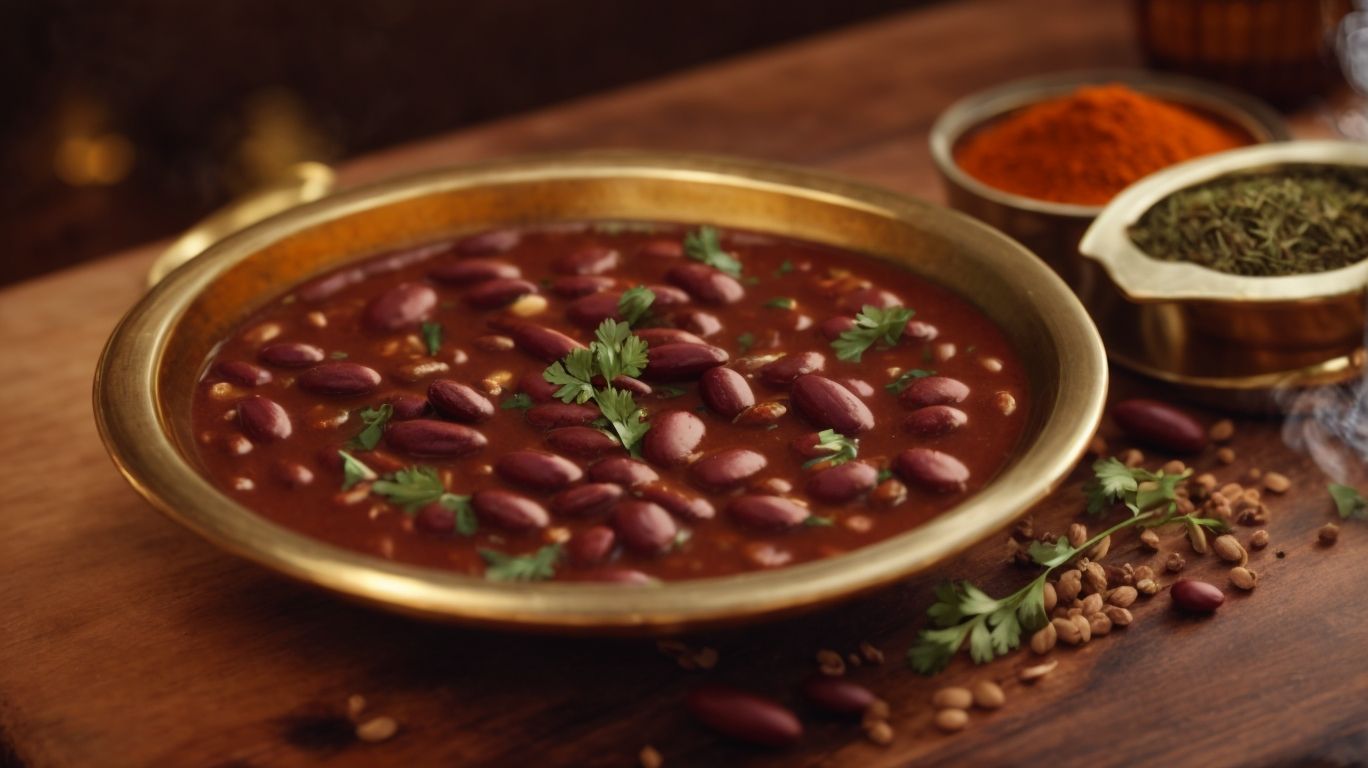
Credits: Poormet.Com – Gerald Mitchell
Mastering the art of cooking Rajma, whether soaked or unsoaked, opens up a world of culinary possibilities, allowing you to savor the rich flavors, spices, and comfort of this beloved Indian dish.
Rajma, known for its protein-rich content and satisfying taste, can be prepared in a myriad of ways to suit different preferences. Whether simmered slowly in a traditional pressure cooker, or jazzed up with modern fusion twists in a slow cooker or instant pot, the adaptability of Rajma dishes is truly remarkable.
Enhancing the flavors of Rajma can be achieved through a variety of techniques, such as tempering with cumin seeds and garlic, garnishing with fresh cilantro, or stirring in a dollop of creamy yogurt for a touch of richness.
Rajma holds a special place in Indian culinary culture, being a staple dish in many households and representing warmth, hospitality, and togetherness during shared meals.
Frequently Asked Questions
1. How to Cook Rajma Without Soaking?
There are a few methods to cook rajma without soaking, but my personal favorite is to use a pressure cooker. This method saves time and still produces perfectly cooked rajma.
2. Can I cook rajma without soaking overnight?
Yes, you can cook rajma without soaking overnight. Simply follow the pressure cooker method or soak the rajma in hot water for an hour before cooking.
3. What ingredients do I need to cook rajma without soaking?
You will need rajma beans, water, salt, and any other spices or ingredients you prefer for flavor. The key is to use a pressure cooker or follow the hot water soaking method.
4. How long does it take to cook rajma without soaking?
Using a pressure cooker, rajma can be cooked in about 30 minutes without soaking. If using the hot water soaking method, it may take about an hour to cook.
5. Can I use canned rajma to cook without soaking?
Yes, you can use canned rajma to cook without soaking. Simply drain and rinse the beans before cooking, as they are already soaked and ready to use.
6. Are there any benefits to cooking rajma without soaking?
Yes, there are some benefits to cooking rajma without soaking. This method helps to retain the nutrients and flavors of the beans, and also saves time and effort compared to soaking overnight.

